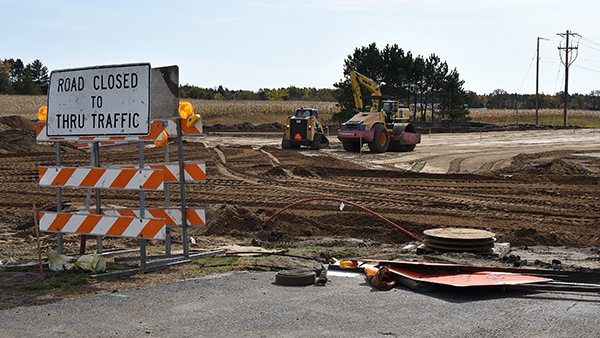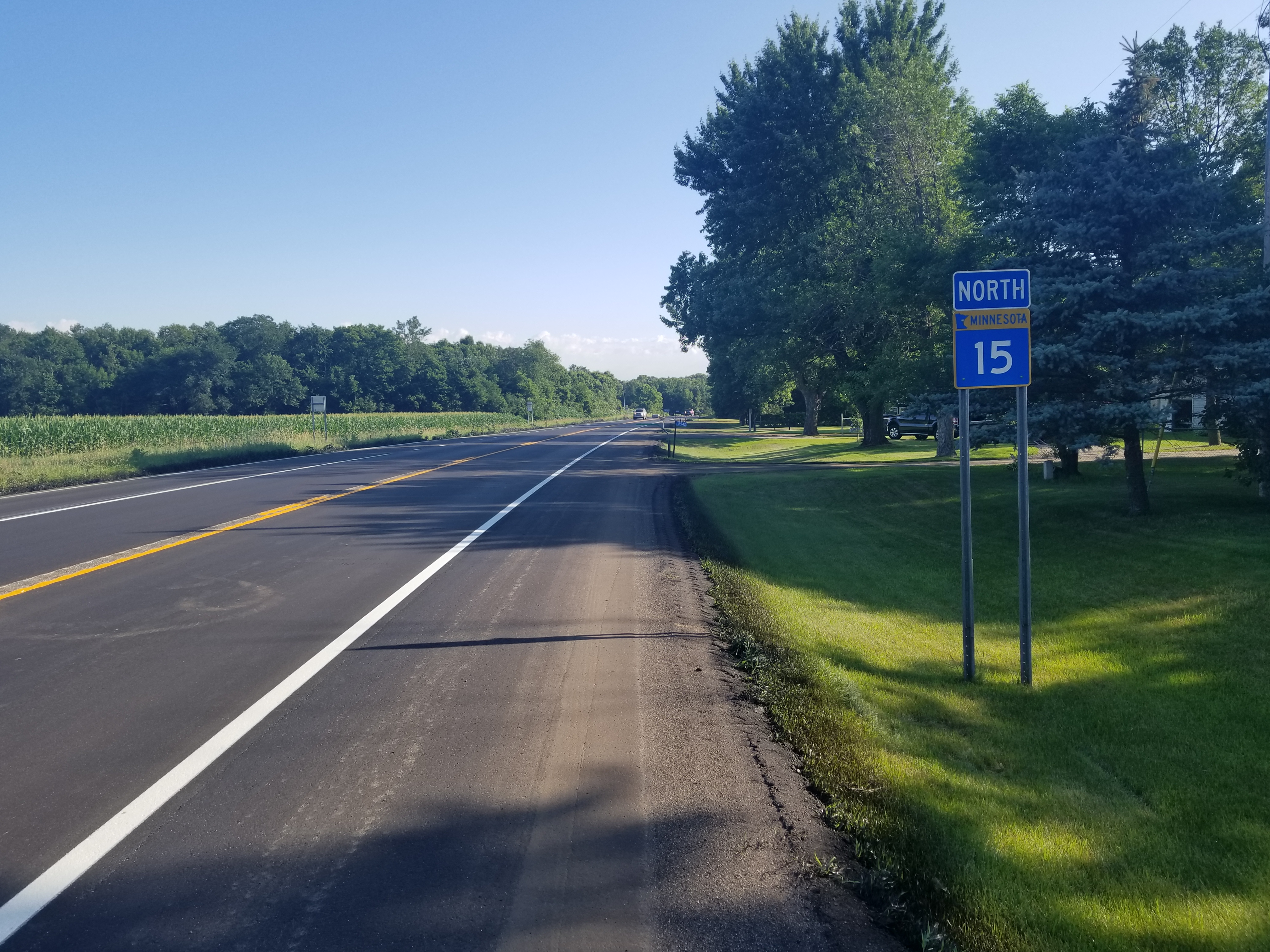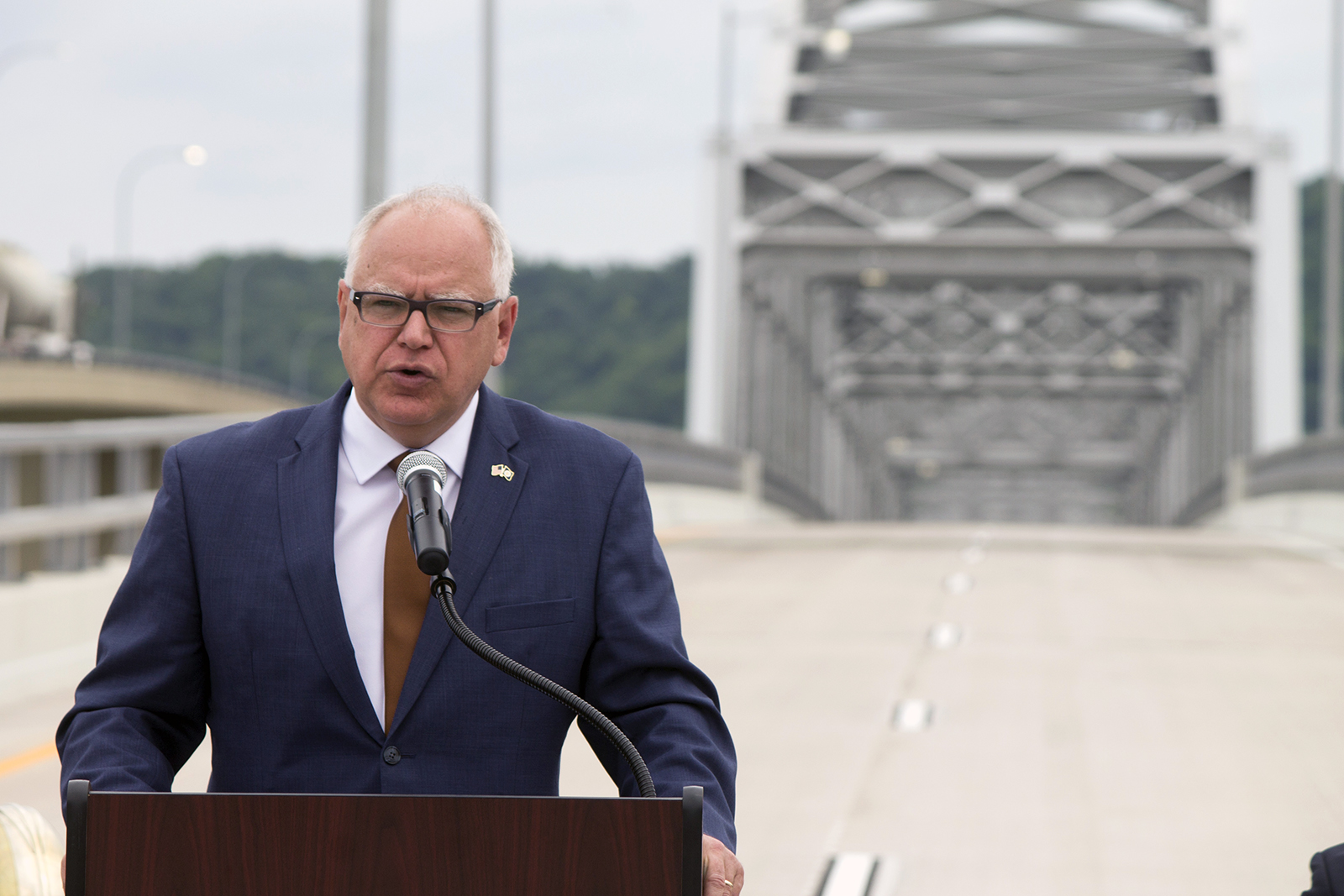By Joseph Palmersheim
Road reconstruction, major bridge construction, new interchanges and road resurfacing were a big part of the 2019 construction season.
“We made great progress on several significant projects, and we’re grateful to Minnesotans for bearing with us during closures and detours,” said MnDOT Commissioner Margaret Anderson Kelliher. “Despite challenging weather conditions this year, our teams were able to complete hundreds of projects, sometimes ahead of schedule, and all of the work has made our state roadways safer and more reliable.”
The 2019 road and bridge construction program included 221 projects. An additional 66 projects helped improve safety at railroad crossings, and made improvements on runways and terminals at regional airports.
Complete list of 2019 projects and their status
Studies and plans for possible future projects
Construction highlights by region include:

Resurfacing of I-35W in Minneapolis continues on the 35W@94 project, which is scheduled to be completed in 2021. Photo by Rich Kemp
|
Twin Cities
- I-35W@94 Minneapolis – Crews reopened the 28th Street and 40th Street bridges; reopened the ramp from Fourth Avenue to I-35W south and opened I-35W south to three lanes. The work is part of this four-and-a-half year project reconstructing 2.5 miles of I-35W near downtown Minneapolis. Work includes replacing and improving bridges and reconstructing pavement on I-35W, building a new MnPASS lane, providing space for Orange Line Bus Rapid Transit Station, improving access to the Lake Street Business District, and adding noise and safety improvements.
- I-35W Minnesota River Bridge replacement – Constructed and opened the new northbound I-35W bridge spanning the Minnesota River and raised I-35W between Cliff Road and Black Dog Road out of the floodplain as part of the I-35W Minnesota River Bridge replacement project that will continue through fall 2021.
- I-35W North MnPASS – All traffic was shifted to the northbound side for the 2019 construction season while crews constructed new lanes on the southbound side. The new southbound lanes will reopen by mid-November, when traffic will return to the normal north/south patterns and remain there for the winter.
- I-35 split in Forest Lake – Resurfaced existing pavement, replaced the flyover ramp from westbound Hwy 8 to I-35 south with a loop ramp, replaced the westbound Hwy 8 bridge over I-35 and replaced the northbound I-35W bridge over southbound I-35E.
- I-94 Maple Grove to Clearwater – Crews constructed new temporary lanes and crossovers, and reinforced shoulders in preparation for next year’s construction on the westbound and eastbound lanes.
- I-694/94/494 interchange – Replaced and widened the southbound interchange bridge, repaired pavement, constructed new southbound auxiliary lane from 10th Street to I-94, added southbound buffer lanes and reconstructed ramps.
- I-494 pavement rehab in Inver Grove Heights – Widening and resurfacing of bridge deck over Concord Street/Hwy 156, bridge repairs and new auxiliary lane, between Concord St. and Blaine Avenue, will be complete in November 2019. Resurfacing in both directions between Harman and the Minnesota River is ongoing through fall 2020.
- Hwy 212/County Road 41 reduced conflict intersection – Two reduced conflict intersections were finished at County Roads 36 and 41 on Hwy 212 in Dahlgren Township to improve safety.
- Hwy 65, East Bethel and Ham Lake – A two-year project completed this past summer built six reduced conflict intersections and lengthened left turn lanes on the Hwy 65 Corridor between Blaine and East Bethel. The signalized RCI at Hwy 65 and Viking Boulevard is the first in Minnesota. The improvements will improve safety and mobility on nearly 17 miles of the heavily traveled highway corridor.

Crews construct a roundabout at the intersection of Hwy 71 and Hubbard County Road 15 in Park Rapids. The project also includes pedestrian accessibility improvements, sewer updates and resurfacing. Photo by Rich Kemp
|
Northern Minnesota
- I-35 Snake River – Constructed four new bridges at the Snake River at Hwy 70 and County Road 7 near Pine City, resurfaced seven miles of pavement.
- Hwy 65 Sandy River – Resurfaced approximately 16 miles of pavement from Sandy River to Hwy 200, repaired or replaced several culverts and made accessibility improvements at the Big Sandy Lake Overlook.
- Hwy 65 Aitkin/Itasca counties – Resurfaced approximately 25 miles of pavement from Hwy 200 to Hwy 169 near Pengilly.
- Hwy 2/Hwy 59 Erskine – Reconstructed and replaced the concrete pavement on Hwy 2. Bridge repair and maintenance has also been completed on the Hwy 59 overpass as well as replacement of curb, gutter, storm sewer and culverts.
- Hwy 71 Park Rapids – Graded and resurfaced north to 8th Street, storm sewer replaced, and along with the city of Park Rapids, resurfaced and replaced frontage roads, sanitary sewer and water mains. The project also included construction of the roundabout at the intersection of County Roads 15 and 53. Project is estimated to be completed in early November.
- Hwy 1 Northome – Resurfaced Hwy 1 in Northome, constructed sidewalks, improved accessible pedestrian ramps and signals, constructed multi-use trail, curb and gutter, storm sewer, highway lighting and traffic signals. Project is estimated to be completed in early November.

District 3's Hwy 15 Kimball project wrapped up ahead of schedule on July 26. The project reconstructed 12 miles of Hwy 15 road surface, repaired or replaced pipes and box culverts, and upgraded the pedestrian crosswalks and signals at the intersection of Hwy 15 and Stearns County Roads 47/136 in St. Augusta. Photo by Jenny Seelen |
Central Minnesota
- I-94 Alexandria to Garfield – Completed concrete resurfacing between Hwy 29 near Alexandria to Hwy 114 near Garfield, and replaced the eastbound I-94 bridge over Lake Latoka.
- Hwy 59/55/79 – Completed resurfacing and a partial reconstruction of Hwys 55, 59 and 79, including storm sewer upgrades, lighting installation and pedestrian accessibility improvements in Elbow Lake.
- Hwys 27, 75 – Completed resurfacing and replaced sidewalks, curb and gutters to improve pedestrian accessibility on Hwys 27 and 75 in the city of Wheaton.
- Hwy 10, 59 in Otter Tail County – Resurfaced approximately 15 miles of Hwy 10 between Frazee and Perham in both directions, and approximately one mile on Hwy 59 north of Pelican Rapids.
- Hwy 28 from Starbuck to Glenwood – Resurfaced and widened shoulders from Starbuck to Glenwood, constructed a bypass lane at County Road 24 and left turn lanes at Golf Course Road.
- Hwy 119 from Hwy 40 to Hwy 12 – Resurfaced from Hwy 40 in Lac qui Parle County to Hwy 12, north of Appleton. The project excluded the portion of Hwy 119 that is within the city of Appleton.
- Hwy 75 near Wolverton – Resurfaced the highway from County Road 184 to the Wilkin/Clay county line, and completed storm sewer repair and sidewalk improvements in the city of Wolverton.
- Hwy 27, Little Falls – Reconstructed road, replaced city water and sewer utilities, improved pedestrian sidewalks and approaches, upgraded signals.
- Hwy 55, Annandale to Buffalo – Reconstructed road surface, replaced pipes, improved pedestrian access in Maple Lake.
- Hwy 15, St. Augusta to Kimball – Reconstructed road surface and replaced pipes.
- Hwy 210, Brainerd to Ironton – Reconstructed road surface, improved access and replaced drainage.
- Hwy 10, Wadena – Resurfaced road surface east and west of Wadena, mainline reconstruction begins in 2020.
- Hwy 65/107, Braham – Installed a Continuous Green T-Intersection with traffic signal.

Gov. Tim Walz speaking at the July 1 opening of the historic Hwy 43 through-truss bridge in Winona. Photo by Kevin Gutknecht |
Southern Minnesota
- Hwy 14 Tracy – Resurfaced approximately 13 miles from 4th Street in Tracy to County Road 7 in Revere, repaired culverts, upgraded sidewalks and pedestrian ramps.
- I-90 Albert Lea – Constructed a reduced conflict intersection (J-turn) at the intersection of Hwy 23 and County Road 7 in Marshall, and installed a living snow fence for blowing snow control.
- I-90 bridge – Twelve bridges were repaired along I-90 between St. Charles and Nodine.
- I-90 – Work continues to resurface all lanes of I-90 between Hwy 61 near the city of Dakota to Wisconsin border.
- I-90 Albert Lea – Twelve miles of westbound lanes paved with concrete and westbound bridge deck replaced at Freeborn County Road 46.
- Hwy 14 – Ceremonial groundbreaking event planned Nov. 1 for the project to expand Hwy 14 to four lanes between Owatonna and Dodge Center. Construction planned through 2022.
- Hwy 52 – Resurfaced from Marion to Chatfield along with culverts replaced and new signal installed at Chatfield.
- Hwy 43 – Winona Bridge rehabilitation completed and opened to traffic July 1 adjacent to new bridge that was completed in 2016.
- Hwy 61 – Work continues to complete resurfacing of approximately 21 miles from Lake City to Hwy 42 near Kellogg. Completion expected in early November.
- I-90 Fairmont – Resurfaced 16 miles of westbound I-90 from Hwy 15 in Fairmont to the Blue Earth River. The eastbound lanes will be resurfaced in 2020.
- Hwy 60 – Repaired and resurfaced approximately 13 miles of both east and westbound Hwy 60 from Hwy 4 west of St. James to Hwy 15.
- Hwy 14/Hwy 15 New Ulm Gateway – The Front Street Bridge and new interchange at Hwy 14/Hwy 15/County Road 21 were completed. The New Ulm Minnesota River bridge is still under construction and completion is weather dependent.
- Hwy 63 Red Wing Bridge – New bridge will open to traffic in November. Demolition of current bridge will begin in winter and additional road work on adjacent roads and finishing work on the bridge scheduled for 2020 completion. Ribbon-cutting event tentatively planned for Nov. 14 new bridge opening.
|



